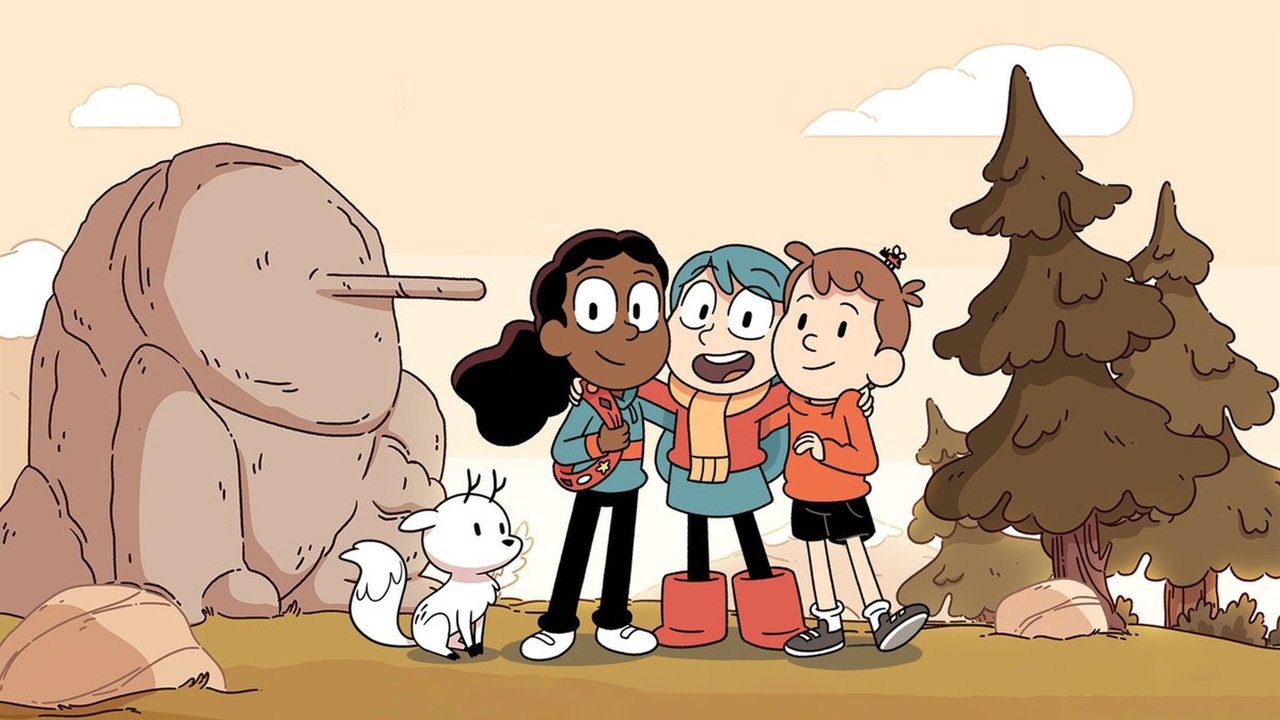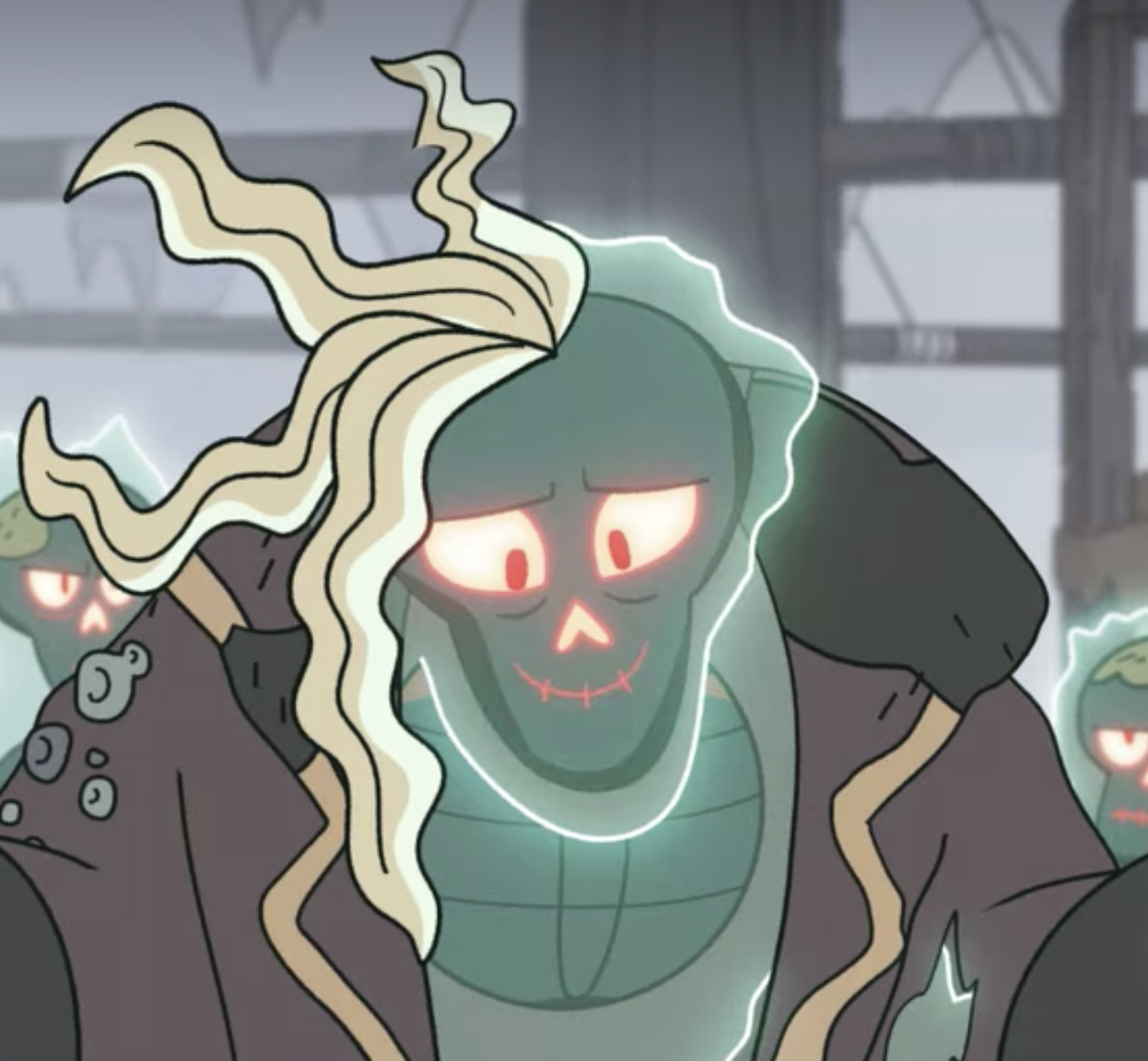


Maybe it would not have worked with “The Draugen’s” sweet ending.

Strangely, the animators decided not to go with the seaweed heads (which seems like a particular Hilda touch to me), instead sticking with the show’s traditional ghost designs. The Hilda draugen float through storms in a torn apart ship, haunting the maelstrom. They remain ghosts, but of mariners who perished at sea. Hilda ’s interpretation runs toward a more recent version of Scandanvian lore. Malevolent, blood-thirsty, jealous, and greedy, they were known to change shapes and mess with the dreams of the living. Some legends give them vampiric qualities. Typically, they are depicted as revenants, where a spirit takes over a vessel of some sort, like a body or a cairn. From Denmark to Sweden, from Norway to Iceland, the draugr appear as a recurring menace, stalwarts of Old Nordic myths. Several different versions of the draugen, the creature of the week, exist throughout Nordic folklore. Hilda might be a generally episodic series, but the creators want us to know the creatures’ world isn’t done just because Hilda stepped away. While the Wood Man makes for the biggest presence, we also see water and weather spirits, salt lions, King Rat, and the graveyard ghosts from season one. True to form, the Wood Man has some of the best lines throughout the episode. It’s always a treat when he appears, in his disinterested, self-centered glory, delivered gloriously in Ako Mitchell’s deadpan baritone. “That’s because I didn’t tell you,” the Wood Man replies. “I didn’t know you were in town,” she says. She finds the Wood Man gambling with a few fishermen. And with her home under a burgeoning threat, Hilda’s desperate for a solution. She’s there because King Rat, another recurring character and a source for secrets in Trolberg - the source for secrets in Trolberg - offered to trade information for a sandwich. The story kicks in when Hilda happens across the Wood Man at a port tavern. Some have a major influence on the plot others hang out in the background. Since we’re still early in the season, the creators take some time to reintroduce us to a few peripheral characters. That’s not to say that’s absent from the series, it’s just that the overall vibe is far more chill. Pearson’s book is filled with energy and forward momentum. Oddly, the show is calmer and more relaxed than the comic. Coyle and company guide us through the story instead of tugging us along. That being said, even in the lax time, every beat, every scene flows and leads into the next one. It’s a show that encourages its audience to set forth and discover their own adventures. “The Draugen” packs in so much information and not overwhelm us because it’s fine with sitting back to go sailing, Walter Martin’s “Let the Tall Ships Sail” playing on the soundtrack. Even if they last only a few seconds, we are still encouraged to marvel at Trolberg and the surrounding area. I think this works because we’re given moments to breathe. It understands the world is wide and wonderful, not only in this heightened version of it, but in every sight, every experience around us. Hilda exists at this pace where we never lose its gentle spirit while we also never dwell in drudgery. And it never feels rushed or chaotic or like we’re being bombarded with information and gags.Īndy Coyle keeps the episode snappy and fluid. This week, for example, we travel from the Trolberg sewers to the port to the open sea and finally through the city all over again, in the span of 22 minutes. This is “The Draugen,” written by Ben Joseph and directed by Andy Coyle.Ī lot of story happens in “The Draugen.” OK, a lot happens in every episode, and part of the show’s strength lies in how the creators guide us through the setups, carry us from scene to scene. After watching him at work in the previous episode, she immediately identifies something’s off about this guy and, unless she acts quickly, her entire way of life will be in jeopardy. Hilda wastes no time this week trying to uncover Erik Ahlberg’s secrets.


 0 kommentar(er)
0 kommentar(er)
